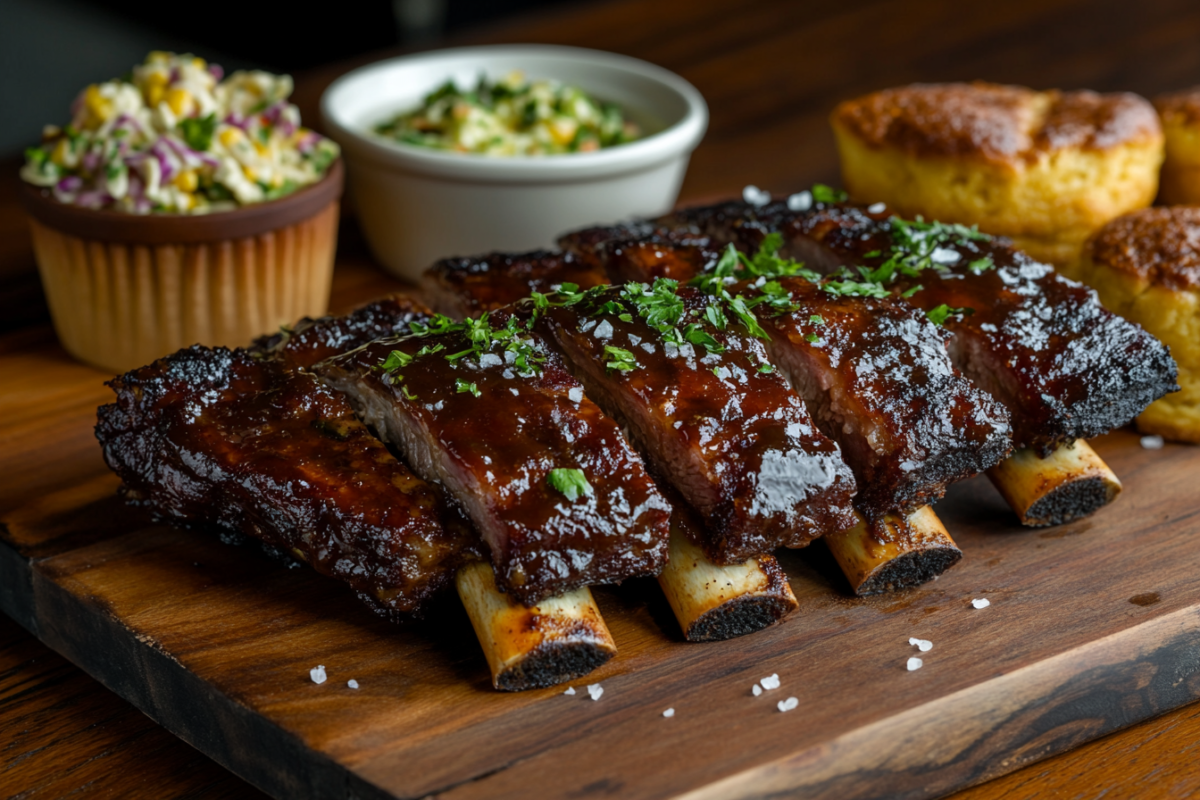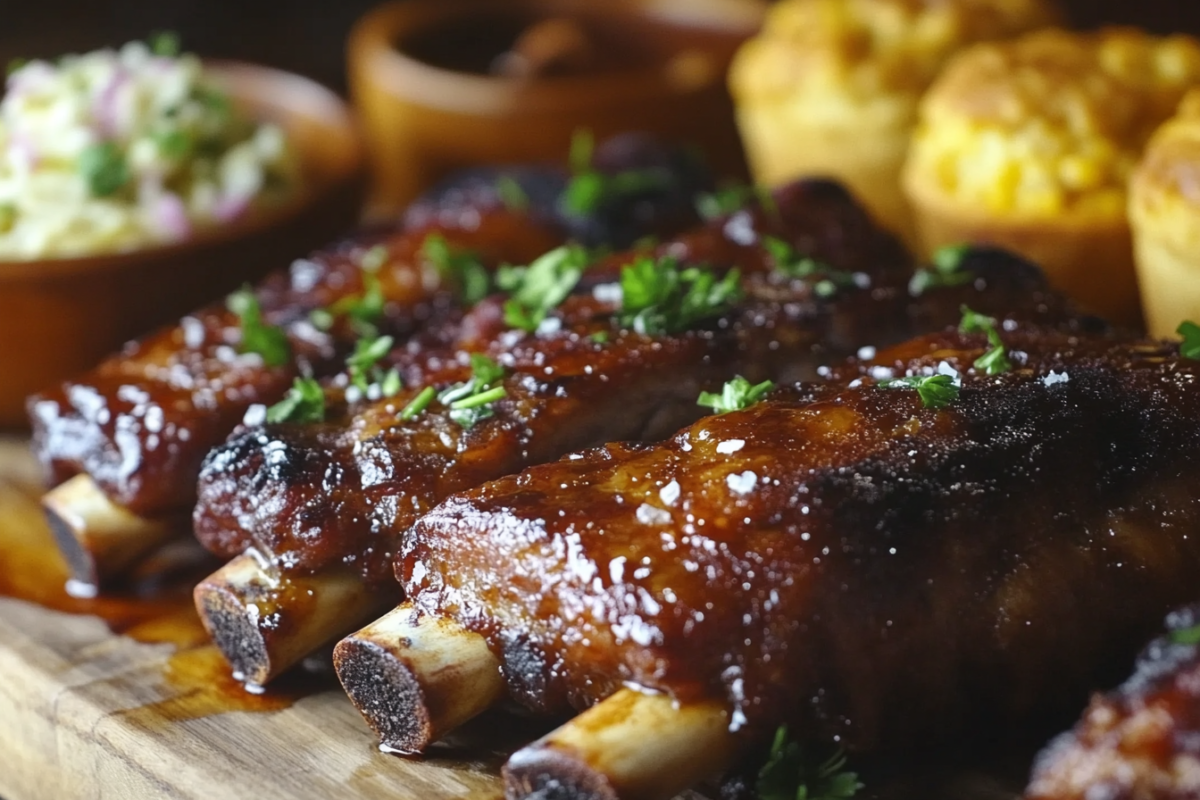Beef back ribs are a delicious, versatile cut of meat that’s perfect for those who crave tender, flavorful ribs. Whether you’re a barbecue enthusiast, an oven -baking aficionado, or a fan of slow cooking, there’s a method for everyone to enjoy. In this comprehensive guide, we’ll explore everything you need to know about cooking beef back ribs—from selecting the perfect cut to mastering the cooking techniques and serving ideas. Let’s dive into the world of beef back ribs and elevate your cooking game!
Introduction to Beef Back Ribs
What Are Beef Back Ribs?
Beef back ribs, cut from the top dorsal area of a cow near the spine, are known for their rich, meaty flavor. These ribs are what’s left after the ribeye or prime rib has been removed, making them less costly than other cuts yet equally satisfying. Compared to short ribs, beef back ribs have more bone and less meat but boast a unique flavor that shines when cooked low and slow.
Nutritional Value of Beef Back Ribs
Beef back ribs aren’t just about indulgence—they also pack a nutritional punch. High in protein and loaded with essential nutrients like zinc, iron, and vitamin B12, they’re a hearty addition to any meal. However, it’s worth noting that these ribs can be higher in fat, which contributes to their juiciness and flavor. For health-conscious cooks, trimming excess fat before cooking can strike a balance between taste and nutrition.
Selecting Quality Beef Back Ribs
How to Choose the Best Beef Back Ribs
When it comes to beef back ribs, selecting the right cut is crucial for a tender and flavorful result. Start by looking for ribs with good marbling. This refers to the streaks of fat within the meat, which, when cooked, melt into the meat and enhance its juiciness and flavor. The more marbling, the more tender and flavorful your ribs will be.
Next, check the meat quality. Look for ribs with firm, red meat and a slight gloss. If the meat appears dull or discolored, it might not be fresh. Also, avoid ribs with excessive fat that’s not marbled through the meat, as this can lead to an overly greasy dish. Fresh beef should have a clean, fresh smell, not a sour or rancid one.
Signs of Freshness
Fresh beef back ribs should have a vibrant color and firm texture. When pressed lightly, the meat should bounce back and not leave an indentation. The bones should be clean and white, indicating that the ribs were properly prepared. Additionally, if the ribs are sold in plastic wrap, ensure the packaging is intact and doesn’t have any signs of leaking or excessive moisture, as this could indicate spoilage.
Where to Buy Beef Back Ribs
Once you know how to spot quality beef back ribs, the next step is to find a reliable source.
Local Butchers:
One of the best places to buy beef back ribs is from a trusted local butcher. Not only can they provide expert advice on the best cuts, but they may also offer fresher, higher-quality options than large supermarkets. Plus, you can ask them to trim the ribs to your desired specifications, ensuring they’re perfect for your recipe.
Online Meat Suppliers:
If local options are limited, online meat suppliers are a great alternative. Many reputable online butchers deliver high-quality beef straight to your door. Look for suppliers that prioritize sustainable practices and high-quality cuts. Websites like BBQ Champs offer a variety of beef rib cuts, including beef back ribs, with detailed descriptions to help you make the best choice.
Preparing Beef Back Ribs
Trimming and Cleaning
Before you dive into cooking your beef back ribs, it’s essential to prepare them properly. While many beef ribs are pre-trimmed, there are a few steps you should take to ensure they’re ready for cooking.
Removing the Membrane:
One of the most crucial steps in preparing beef back ribs is removing the membrane. This thin, silvery layer on the underside of the ribs can become tough and chewy when cooked, so it’s best to remove it for a more tender bite. To do this, use a sharp knife to gently lift a corner of the membrane at one end of the rack. Once you’ve gotten it started, grab a paper towel to get a better grip and slowly pull it off the entire rack. Don’t rush; a steady hand will make the process smoother.
Trimming Excess Fat:
Although a bit of fat on the ribs adds flavor and moisture, you don’t want it to be overwhelming. Trim away any large patches of fat, especially those that are too thick or uneven. You can leave a thin layer of fat, as this will render and provide extra juiciness during the cooking process. Proper trimming ensures that the ribs cook evenly and aren’t greasy.
Marinating and Seasoning
Once your beef back ribs are clean and trimmed, it’s time to make them flavorful. You have two primary options for seasoning: marinating or dry rubbing. Both methods will enhance the natural flavor of the meat, but it depends on your preferred style.
Dry Rub Recipes:
A dry rub is a simple and effective way to infuse flavor into the ribs without making them soggy. Classic dry rubs for beef back ribs include a combination of brown sugar, paprika, salt, pepper, garlic powder, and onion powder. You can also add a bit of cayenne pepper for heat or smoked paprika for extra depth of flavor. Mix the ingredients in a bowl and rub them generously over the entire surface of the ribs. Make sure to work the rub into all the nooks and crannies for even coverage.
If you want to get creative, consider adding herbs like rosemary or thyme, or experiment with coffee grounds or mustard powder for a unique flavor profile.
Marination Time and Tips:
If you prefer marinating your beef back ribs, you can use a simple marinade of olive oil, vinegar, Worcestershire sauce, soy sauce, garlic, and some fresh herbs. Marinate the ribs in a sealed bag or covered dish in the fridge for at least 4 hours, though overnight is even better. The marinade helps tenderize the meat and infuses it with deep, savory flavors. Be sure not to marinate for too long, as the acid in the marinade can break down the meat and make it mushy.
Cooking Methods for Beef Back Ribs
When it comes to cooking beef back ribs, the method you choose can make all the difference in terms of flavor, tenderness, and texture. Whether you prefer the smoky flavor from a grill, the slow-roasted goodness of oven-baked ribs, or the melt-in-your-mouth tenderness from slow cooking, each method has its own unique benefits. Let’s dive into the various cooking techniques to help you master the art of beef back ribs.

Smoking Beef Back Ribs
Smoking is arguably one of the best ways to cook beef back ribs, especially if you want to infuse them with rich, smoky flavor. The low and slow cooking process ensures that the meat becomes tender while absorbing the aromatic qualities of the wood.
Ideal Wood Types for Smoking:
The type of wood you use for smoking plays a huge role in the flavor profile of your ribs. For a classic, well-rounded flavor, go for oak or hickory. These woods provide a strong, smoky flavor without overpowering the natural taste of the beef. If you want a sweeter, milder smoke, try fruit woods like apple or cherry. These woods are excellent for providing subtle sweetness and a delicate smokiness that complements the beef without overwhelming it.
Temperature and Time Guidelines:
To smoke your beef back ribs properly, preheat your smoker to around 225°F (107°C). This low temperature ensures that the ribs cook slowly and evenly, resulting in that melt-in-your-mouth tenderness. Place the ribs on the smoker grate, bone-side down, and let them cook for 4 to 6 hours, depending on the size of the ribs. During this time, you can spritz the ribs with a mixture of apple cider vinegar and water every hour to keep them moist. The ribs are done when the meat has pulled back from the bones and the internal temperature reaches 195°F (90°C).
Grilling Beef Back Ribs
Grilling beef back ribs is another popular method that brings out a delicious, caramelized exterior. There are two main techniques for grilling ribs: direct and indirect grilling.
Direct vs. Indirect Grilling:
With direct grilling, the ribs are placed directly over the heat source, which sears the meat quickly and creates those desirable grill marks. However, because beef back ribs are quite thick, this method can lead to uneven cooking or burning if not managed properly. For a more controlled approach, use indirect grilling. In this method, the ribs are placed to the side of the grill, where they cook with indirect heat. This method ensures that the ribs cook through without burning, while still getting that delicious, smoky char on the outside.
Achieving the Perfect Char:
To achieve the perfect char, preheat your grill to medium-high heat and place the ribs over the indirect heat zone. Grill the ribs for 1.5 to 2 hours, flipping them occasionally to ensure even cooking. In the final 10-15 minutes, move the ribs over to the direct heat to achieve a crispy, caramelized crust. Brush your ribs with your favorite BBQ sauce during the last few minutes of grilling for a flavorful glaze.
Oven-Baking Beef Back Ribs
If you don’t have access to a smoker or grill, don’t worry! You can still cook perfectly tender beef back ribs in the oven. Oven-baking is an excellent method for slow-cooking the ribs while keeping them juicy and flavorful.
Foil-Wrapping Technique:
To keep the ribs moist and tender, wrap them tightly in aluminum foil before baking. This creates a steamy environment that allows the ribs to cook gently without drying out. For added flavor, you can place a few pats of butter, garlic, and herbs on the ribs before sealing them in foil.
Baking Time and Temperature:
Preheat your oven to 275°F (135°C) for slow, even cooking. Place the wrapped ribs on a baking sheet and bake them for 2.5 to 3 hours. Afterward, carefully unwrap the foil and return the ribs to the oven for an additional 20-30 minutes to allow the exterior to crisp up. If you prefer a glaze, brush the ribs with BBQ sauce during this final phase of baking.
Slow Cooking Beef Back Ribs
For ultra-tender beef back ribs, slow cooking is the way to go. The low, moist heat breaks down the collagen in the meat, making it incredibly tender and easy to pull apart.
Using a Slow Cooker:
To cook beef back ribs in a slow cooker, simply place the ribs inside and add your favorite marinade or dry rub. Pour in a bit of liquid—beef broth, apple cider, or even a splash of soy sauce will work well—and cover the ribs with the lid. Set the slow cooker to low and cook for 6 to 8 hours. The low-and-slow process allows the ribs to cook to perfection, becoming juicy and falling off the bone.
Recommended Cooking Durations:
If you’re in a bit of a rush, you can set the slow cooker to high, and cook for about 3-4 hours instead. However, if you have the time, cooking on low will yield the most tender results. Either way, make sure to check the ribs near the end of the cooking time, as they should be fork-tender but not falling apart completely.

